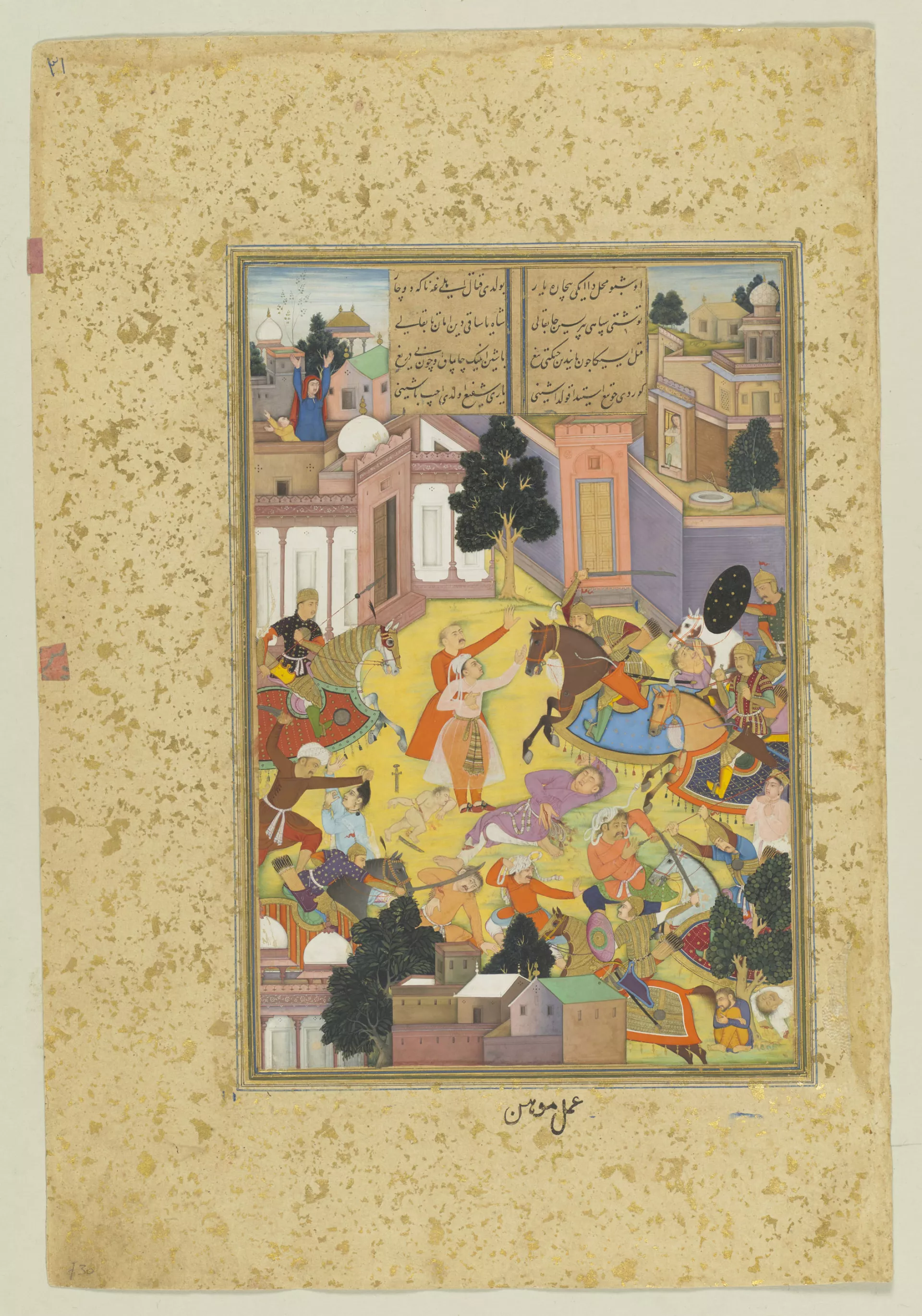
Eastern Encounters
Drawn from the Royal Library's collection of South Asian books and manuscripts
Two loyal friends stand together in a vain bid to prevent fatal combat between their respective groups by Mohan
Mughal, <i>c</i>.1605–10Fol. 30r from a manuscript of the Khamsa of Nava’i (see cat. no. 21) | A composite page: opaque watercolour including gold and silver metallic paints with decorative incising on paper; text in ink on paper adhered onto surface; set into margins of gold-flecked paper | 34.5 × 23.3 cm (folio); 22.0 × 14.7 cm (panel) | RCIN 1005032.h
The calmness of the two figures, a younger and older man, clasping hands at the centre of this painting, is in glaring contrast to the fierce frenzy of the soldiers and townspeople who clash violently around them. The two men represent opposing sides of the combating groups. With little hint of emotion, they attempt to pacify a horse and its rider poised for onslaught. The futility of their actions is made excruciatingly evident by the slashed corpses of a man and infant at their feet. The brutality seems almost comic, with snake-like unravelling turbans and theatrical expressions amid the riot of colour. Yet there are elements of true horror: the determined glare of the soldier, dagger raised, pulling the desperate woman by the hair, and the small figure crouching under the tree beside the body of a man whose arms have been severed. Mohan, the little-known artist of this work, was employed in Jahangir’s painting atelier before the Emperor’s accession (see cat. no. 17). His father, Banwari, was also an artist, and predominantly a painter of battle scenes.[81]
Mohan evidently drew upon his father’s familiarity with Mughal arms and armour in his depiction of those belonging to the mounted combatants in this scene, many of which sparkle with shimmering gold pigment. The influence of Iranian masters is also evident in the hexagonal form of the composition. Combined with the strong verticals of the city walls, this situates the figures inside a ‘dynamic prism’, giving the simultaneous impression of both flatness and recession.[82]
amal-e mohan / the work of Mohan
[81] For Banwari see Seyller 1999, p. 269.
[82] See Minissale 2007, pp. 60–71.








